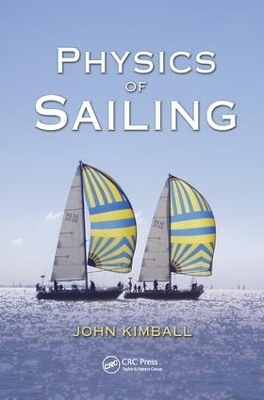
Physics of Sailing
Seiten
2017
CRC Press (Verlag)
978-1-138-42972-7 (ISBN)
CRC Press (Verlag)
978-1-138-42972-7 (ISBN)
Breaking down the complicated concepts of speed, acceleration, torque, fluid mechanics, and surface physics, this book provides an introduction to the basic science underlying the sport of sailing. It also explores how the spectrum, reflection, and polarization of light lead sailors to 'see' wind on the water.
Breaking down the complicated concepts of speed, acceleration, torque, fluid mechanics, and surface physics, Physics of Sailing provides a lively, easily accessible introduction to the basic science underlying the sport of sailing. It illustrates the many ways physics can be used to understand the principles of sailboat propulsion and how a scientific understanding of the boat, wind, and water can lead to more skillful sailing.
After a brief but insightful tour of the history of sailing, the book explores the physics involved in making faster sailing crafts for both upwind and downwind sailing, including Newton‘s impact theory of fluid resistance and lift and drag phenomena. It compares possible sail shapes, presents measurements of hull smoothness, and describes wind turbulence, the nature of water waves, and the structure of wakes. Using the physics of optics, the author also explains the connection between water‘s appearance and the wind. Along with a glossary of sailing terms, he includes many examples throughout to illustrate the concepts in practice.
Avoiding unnecessary formalisms, this book skillfully applies the principles of fluid mechanics to sailboat technology and the art of sailing. It should help you become a more knowledgeable sailor.
Breaking down the complicated concepts of speed, acceleration, torque, fluid mechanics, and surface physics, Physics of Sailing provides a lively, easily accessible introduction to the basic science underlying the sport of sailing. It illustrates the many ways physics can be used to understand the principles of sailboat propulsion and how a scientific understanding of the boat, wind, and water can lead to more skillful sailing.
After a brief but insightful tour of the history of sailing, the book explores the physics involved in making faster sailing crafts for both upwind and downwind sailing, including Newton‘s impact theory of fluid resistance and lift and drag phenomena. It compares possible sail shapes, presents measurements of hull smoothness, and describes wind turbulence, the nature of water waves, and the structure of wakes. Using the physics of optics, the author also explains the connection between water‘s appearance and the wind. Along with a glossary of sailing terms, he includes many examples throughout to illustrate the concepts in practice.
Avoiding unnecessary formalisms, this book skillfully applies the principles of fluid mechanics to sailboat technology and the art of sailing. It should help you become a more knowledgeable sailor.
John Kimball is a professor of physics at the University of Albany.
Depart, Depart from Solid Earth. Downwind-The Easy Direction. Upwind-The Hard Direction. Tipping, Torques, and Trouble. See How the Mainsail Sets. Fluid Dynamics. Surfaces. Waves and Wakes. Wind. Strategy. Finally. Sailing Glossary. Index.
| Erscheinungsdatum | 05.09.2017 |
|---|---|
| Verlagsort | London |
| Sprache | englisch |
| Maße | 156 x 234 mm |
| Gewicht | 453 g |
| Themenwelt | Naturwissenschaften ► Biologie |
| Naturwissenschaften ► Physik / Astronomie | |
| Technik ► Maschinenbau | |
| Technik ► Umwelttechnik / Biotechnologie | |
| ISBN-10 | 1-138-42972-4 / 1138429724 |
| ISBN-13 | 978-1-138-42972-7 / 9781138429727 |
| Zustand | Neuware |
| Haben Sie eine Frage zum Produkt? |
Mehr entdecken
aus dem Bereich
aus dem Bereich
was Mikroben, Tiere und Pflanzen eint und wie sie uns ernähren
Buch | Softcover (2024)
Lenos (Verlag)
CHF 31,95
was wir alle wissen sollten
Buch | Softcover (2023)
Mitteldeutscher Verlag
CHF 33,55


